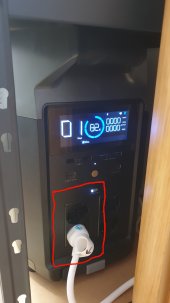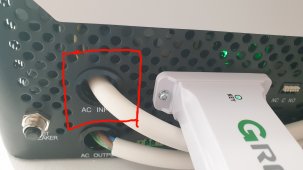GoetzSaCebu
New Member
- Joined
- Jan 7, 2022
- Messages
- 57
Hi guys, I just watched Hobotechs Ecoflow Delta Pro video on YouTube where he tests the older (still beta) version of the DeltaPro.
What makes me curious now is his testing of the UPS mode.
In that UPS mode the DeltaPro just passes thru the grid power and limits output to 2000W, but what makes me curious is how that might affect parallel charging with solar.
I want to have my appliances plugged in the DeltaPro for ""near off-grid" use.
I plan to feed 1500W solar into te DeltaPro to power my appliances (which use about 750W per hour) and use the excess of solar to charge the batteries.
BUT in case we have a cloudy day I also plan to connect the DeltaPro to the grid and have it use Grid power to in case there's not enough solar input to run and charge all appliances.
Now on Hobotechs video he tells that in the case the DeltaPro is connected to the grid it is in UPS mode and passes the grid power thru and doesn't use the inverter. So how is charging and solar affected?
I would like to run from solar in the first place and only if solar isn't enough AND the battery goes under 20% it should recharge thru the grid, but not affecting the AC output or maybe cancelling solar input.
So now I'm a bit confused if the Delta Pro can do what I plan to do.
What makes me curious now is his testing of the UPS mode.
In that UPS mode the DeltaPro just passes thru the grid power and limits output to 2000W, but what makes me curious is how that might affect parallel charging with solar.
I want to have my appliances plugged in the DeltaPro for ""near off-grid" use.
I plan to feed 1500W solar into te DeltaPro to power my appliances (which use about 750W per hour) and use the excess of solar to charge the batteries.
BUT in case we have a cloudy day I also plan to connect the DeltaPro to the grid and have it use Grid power to in case there's not enough solar input to run and charge all appliances.
Now on Hobotechs video he tells that in the case the DeltaPro is connected to the grid it is in UPS mode and passes the grid power thru and doesn't use the inverter. So how is charging and solar affected?
I would like to run from solar in the first place and only if solar isn't enough AND the battery goes under 20% it should recharge thru the grid, but not affecting the AC output or maybe cancelling solar input.
So now I'm a bit confused if the Delta Pro can do what I plan to do.









